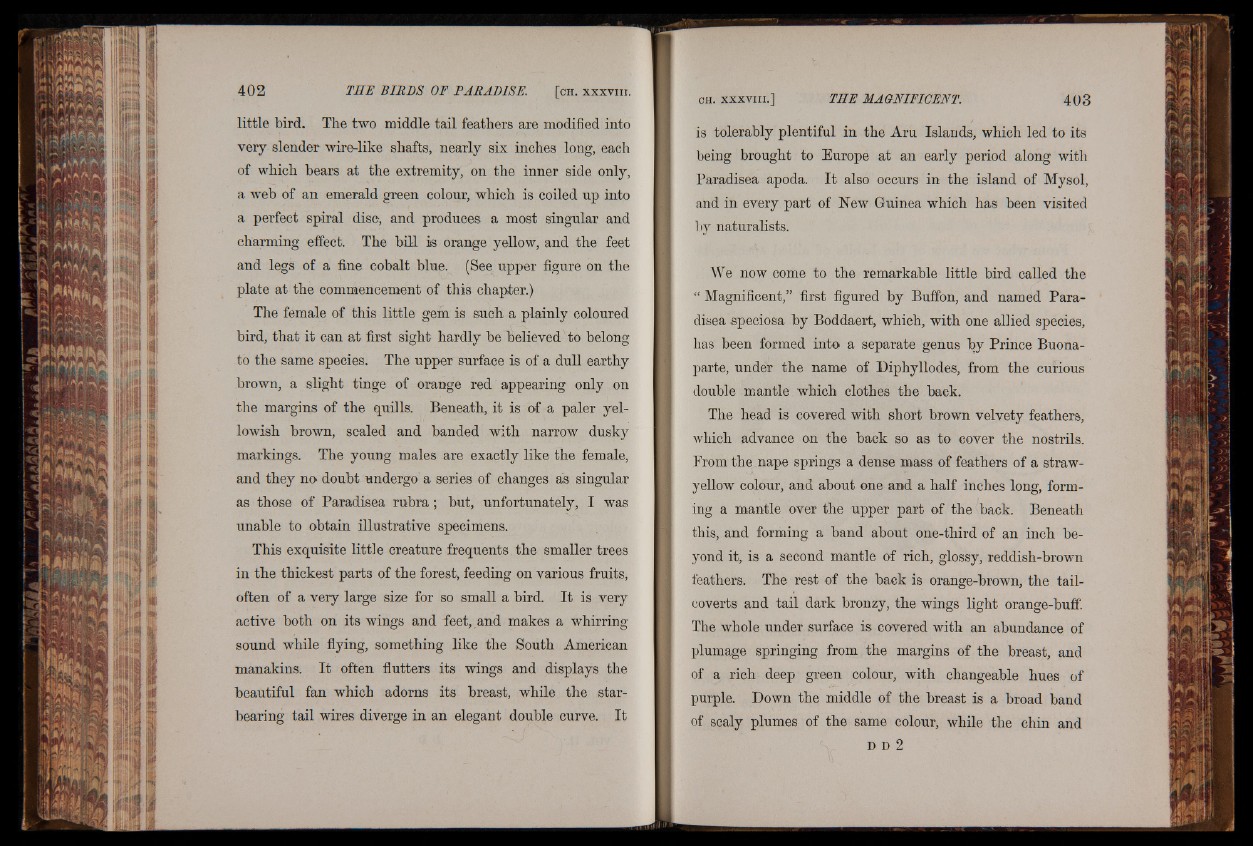
little bird. The two middle tail feathers are modified into
very slender wire-like shafts, nearly six inches long, each
of which bears at the extremity, on the inner side only,
a web of an emerald green colour, which is coiled up into
a perfect spiral disc, and produces a most singular and
charming effect. The bill is orange yellow, and the feet
and legs of a fine cobalt blue. (See upper figure on the
plate at the commencement of this chapter.)
The female of this little gem is such a plainly coloured
bird, that it can at first sight hardly be believed to belong
to the same species. The upper surface is of a dull earthy
brown, a slight tinge of orange red appearing only on
the margins of the quills. Beneath, it is of a paler yellowish
brown, scaled and banded with narrow dusky
markings. The young males are exactly like the female,
and they no doubt undergo a series of changes as singular
as those of Paradisea rubra; but, unfortunately, I was
unable to obtain illustrative specimens.
This exquisite little creature frequents the smaller trees
in the thickest parts of the forest, feeding on various fruits,
often of a very large size for so small a bird. It is very
active both on its wings and feet, and makes a whirring
sound while flying, something like the South American
manakins. It often flutters its wings and displays the
beautiful fan which adorns its breast, while the star-
bearing tail wires diverge in an elegant double curve. It
is tolerably plentiful in the Aru Islands, which led to its
being brought to Europe at an early period along with
Paradisea apoda. It also occurs in the island of Mysol,
and in every part of New Guinea which has been visited
by naturalists.
We now come to the remarkable little bird called the
“ Magnificent,” first figured by Buffon, and named Paradisea
speciosa by Boddaert, which, with one allied species,
has been formed into a separate genus by Prince Buonaparte,
under the name of Diphyllodes, from the curious
double mantle which clothes the back.
The head is covered with short brown velvety feathers,
which advance on the back so as to cover the nostrils.
From the nape springs a dense mass of feathers of a straw-
yellow colour, and about one and a half inches long, forming
a mantle over the upper part of the back. Beneath
this, and forming a band about one-third of an inch beyond
it, is a second mantle of rich, glossy, reddish-brown
feathers. The rest of the back is orange-brown, the tail-
coverts and tail dark bronzy, the wings light orange-buff.
The whole under surface is covered with an abundance of
plumage springing from the margins of the breast, and
of a rich deep green colour, with changeable hues of
purple. Down the middle of the breast is a broad band
of scaly plumes of the same colour, while the chin and
D D 2